Food Habits of Insects
The million or so insects that occur in nature come in an astounding array of sizes, shapes and colors and exhibit a wealth of adaptations. They are found virtually everywhere, and some reach staggering numbers of individuals. Their exceptional variability, ubiquity and great numbers, in combination with the wide assortment of plant and animal foods that nature makes available to them, contribute to an almost infinite variety in feeding. Nevertheless, one can sort out a few of their generalized feeding trends, or food habits, as outlined below.
Insects eat an astonishingly wide array of materials, a few extreme examples of which are worth mentioning. Adult carpet beetles of the genus Anthrenus, are innocuous pollen feeders generally found out-of-doors on flowers, yet they enter homes and lay eggs that soon hatch into larvae. These voracious juveniles eat wool, feathers and hair and, in the process, ruin expensive carpets, upholstery and clothing. Clothes moths.
How Do Insects Eat?
Over a million species of insects have already been discovered, and the Royal Entomological Society estimates that there may be as many as another 10 million species that are still to be discovered. Insects are the largest group of organisms in the world and also the most diverse. I wanted to find out how different insects feed.
Insects either use their jaws to bite and chew their food (such as dragonflies) or suck it up using a proboscis (like a butterfly.) The housefly uses sponging to soften the food with saliva before absorbing the liquid food.
In this article, I look at the different feeding methods for insects and look at a few different insects to see how they feed.
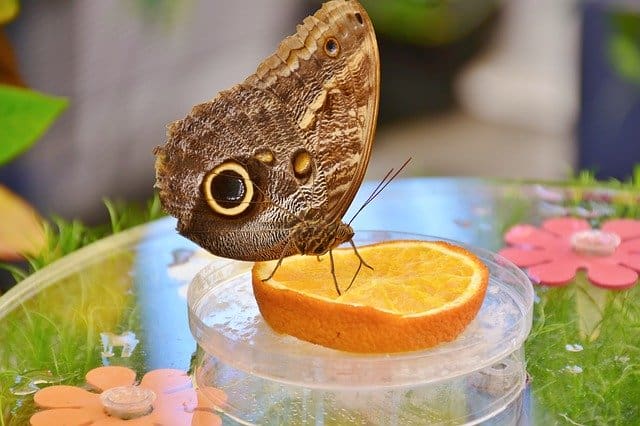
There are two main types of feeding categories that insects fall into. Insects such as ants are chewers, which can be seen by the holes they leave in plants. Grasshoppers, dragonflies, and beetles also fall into this category, using their jaws to bite into their prey. Many insects feed not just on plants but also on other insects.
Suckers are the second category of insects. Mosquitoes fall into this category as they use their proboscis to suck blood from animals. Aphids also fall into this category as they extract food from plants.
Insects can also be divided into two categories according to their life-cycles, and their life-cycles are reflected in their method of finding food.
Insects fall into these two categories. Some insects, such as butterflies, transform by completing a metamorphosis through several stages. In butterflies, this occurs when they change from eggs to larvae before entering pupae and emerging later as a butterfly.
The process is gradual, and the way they feed goes through several stages as well. The larvae do feed, but the pupae do not. When the butterfly emerges, they do feed.
Insects that do not go through this complete metamorphosis resemble small adults when young, and these feed in the same way and have a similar diet throughout their lives.
This shows that although insects are either chewers or suckers, these may change as they go through metamorphosis.
Here are some examples of how different insects feed.
Froghopper
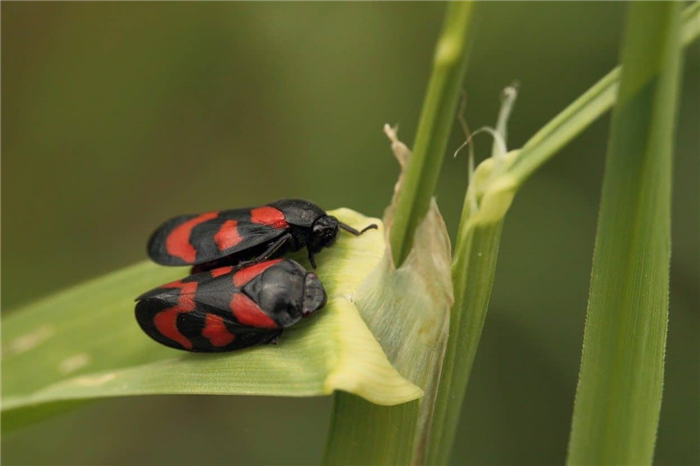
The froghopper or meadow spittlebug causes small amounts of foam, sometimes called cuckoo spit, to appear on plants in May and June. These small insects push their stylet into the plant after hatching from these small eggs until it finds the water-conducting vessel in the plant, the xylem.
The young insect (nymph) then extracts water from the plant, which passes through its alimentary canal and leaves the body as foam. The nymph then lives in the foam, protecting it from predators.
There are small amounts of nitrogenous nutrients in the plant solutions, and the froghopper nymph uses this as food in the foam until the nymph molts and emerges as an adult. Once they leave the foam, the adults feed less often, and the foam dries up.
Cabbage Aphid
Another insect that also uses a stylet to suck nutrients is the cabbage aphid. They push the stylet into the plant’s phloem, which houses the energy and nutrient supplies. There are large amounts of sugar in the phloem, and the aphids can extract this. The sugar passes through the aphid’s body and is excreted as sugary honeydew. This can e found on the leaves of trees when summers are dry.
Cabbage aphids can be a pest to farmers as they only live on cabbage plants and related plants. When there is a heavy infestation of cabbage aphids, they can drain the plant’s energy and nutrients. Once the supply runs out, the aphids will move to the next plant.
Wasps
Wasps feed on nectar and other liquid food, such as the juices from rotting fruit or on the honeydew left behind by the cabbage aphid.
The larvae develop in the nest, so adults need to supply food to the larvae. A well-established colony of wasps may contain thousands of cells, so workers will attack and kill caterpillars, flies, spiders, and butterflies to feed the larvae.
Ladybirds
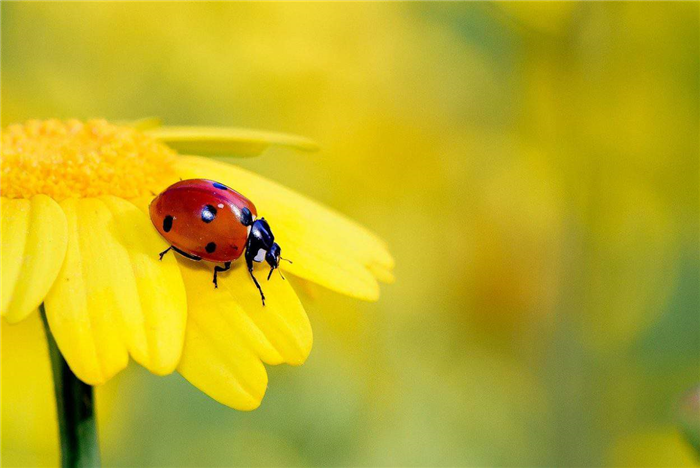
The seven-spotted ladybird lay small clusters of yellow eggs near aphid colonies. Once the ladybirds have hatched, the larvae move to the nearest aphids and start eating them. As long as there are enough aphids to eat, the larvae grow, forming orange and black pupae attached to plants.
The seven-spotted butterfly larvae are true cannibals, however. If the supply of aphids dries up, then they will attack and feed on each other.
Once they become adults, the seven-spotted ladybird continues to eat its diet of aphids but will fly off on long distances to find food if needed.
Parasitic Flies
Another way of feeding is done by a genus of fly. Although the adults feed on flower nectar, the maggots are parasitic. The eggs are laid in the lining of birds’ nests during the incubation period. The maggots will usually hatch at the same time as the young birds and attach themselves through a sucking disc to the underneath of the young birds.
The maggots use their mouth hooks to pierce the bird’s stomach, sucking the blood out. They hide amongst the nest material, and it is thought that more than one hundred maggots may be found in a single bird’s nest.
The white-lined sphinx moth goes through a complete metamorphosis, and the larvae feed in a different way to the adults. The caterpillars will feed on the leaves of tomatoes, grape, willow weed, elm, and other plants. The caterpillars will consume great amounts of leaves as it is not very nutritious.
In winter, the energy and the nutrients from the plants allow the transformation into a moth. The white-lined sphinx moth generally feeds at night and will use its proboscis to suck the sugar nectar from pale or white flowers as these stands out against the rest of the foliage.
The white-lined sphinx moth is also known as the hummingbird moth as they hover in front of the flow, extracting all the nectar before moving onto the next flower.
Dragonflies
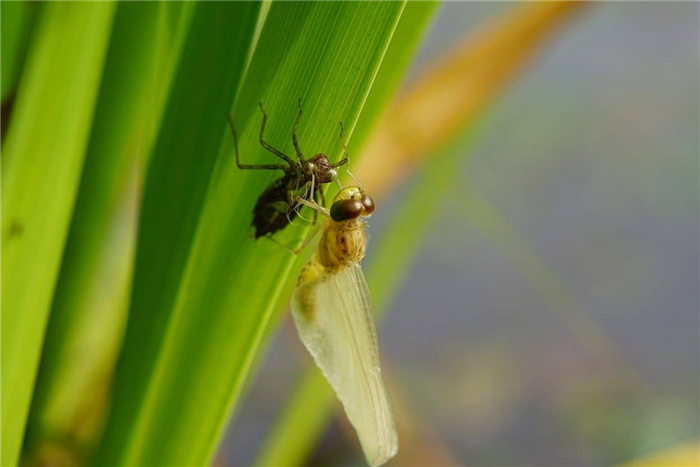
Dragonflies do not suck their food, but instead, use their jaws to bite. They generally outfly their prey and then deliver a few bits to kill them. Dragonflies feed on other insects and even smaller dragonflies.
Dragonflies larger lives in water and will eat almost anything smaller than themselves. Larger dragonfly larvae are also known to eat small fish. The larvae live underwater, undergoing a series of molts as it ages. Once the final skin splits, the adult dragonfly emerges.
Houseflies
Houseflies use a method called sponging to get their food. Houseflies do not have jaws, so their mouths absorb food like a sponge. Houseflies can only eat liquid food. Houseflies release saliva, which is regurgitated from its stomach onto the food, which then dissolves it. They then use their straw-shaped tongues to absorb liquid food. Houseflies taste with their feet.
Bestselling Animal Repellers
Bestseller No. 1
What do Insects Eat?
Insects compose around 90% of all animal species! There are about 6 million species of insects alive today! These various species exist throughout every continent including Antarctica. Many animals and carnivorous plants feed on insects. Insects have a very high nutritional value based on their content of protein, minerals, and fats relative to their size. In many human cultures, some insect dishes such as deep-fried cicadas are a delicacy. Insects are eaten by many, but what do Insects eat themselves? This article will investigate what this huge group of animals eat.
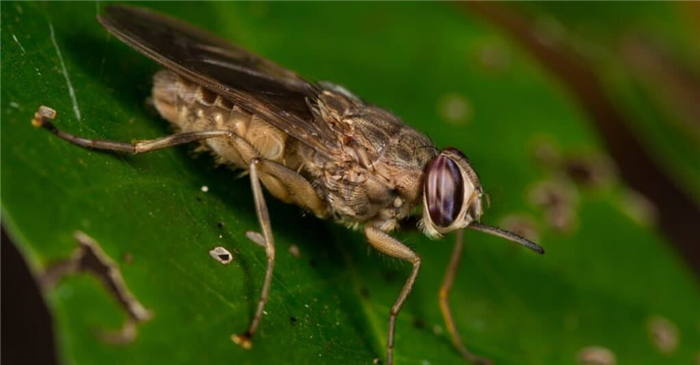
Tsetse flies are found in Africa, living in damp areas along the banks of rivers and lakes. They are the size of a large housefly and feed only on blood.
Insects are classified within the kingdom Animalia and phylum Arthropoda. Arthropods are invertebrates that have distinctive exoskeletons and segmented bodies. An invertebrate is an animal that does not have a vertebral column, as opposed to vertebrate animals that do have vertebrae, like humans. An exoskeleton is a skeleton that is on the outside of an animal’s body rather than on the inside of the body. Within the phylum Arthropoda, insects are those in the class Insecta. It is not known exactly how many species of insects there are, but it is estimated around 6 million! Some animals often mistaken for insects are spiders, snails and slugs, worms, millipedes, and centipedes.
What Do Herbivorous Insects Eat?
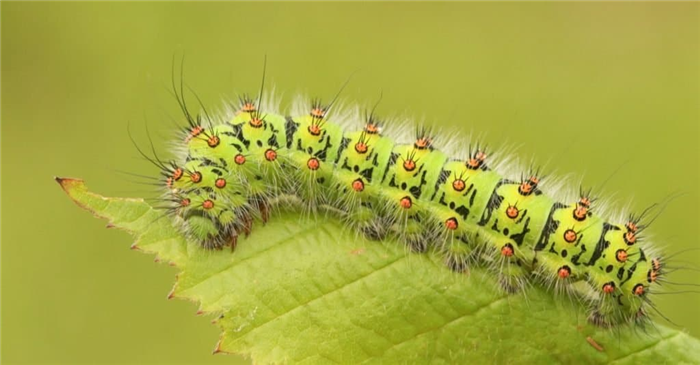
An Emperor moth Caterpillar (Saturnia pavonia) feeding on a bramble leaf.
Most insects feed on plants including stems, leaves, seeds, and flowers. Caterpillars are amongst the most famous herbivorous insects because of the large volume of leaves they consume. Caterpillars must eat tremendous amounts of leaves to prepare for the pupal stage and metamorphosis. The tobacco hornworm, for example, increases its weight ten-thousandfold in a mere 20 days!
Also, as a result of many insects’ plant-based diets, coevolution has occurred in many species. Coevolution is when two or more species create selective pressures that influence each other’s evolution. An example of this is how many plants have evolved chemical defense mechanisms to deter insects from feeding on them and many insects subsequently evolved resistance to those chemical toxins.
There are also some very interesting mutualistic relationships between insects and plants. Mutualism is when both parties benefit from the relationship. An example of a mutualistic relationship is that between ants and acacia plants. The acacia plants provide the ants with shelter and protection inside the plant’s thorns. The ants provide the acacia plant with protection from other herbivores. The ants also trim back the leaves of other plants blocking sunlight from the acacia.
Frugivorous Insects
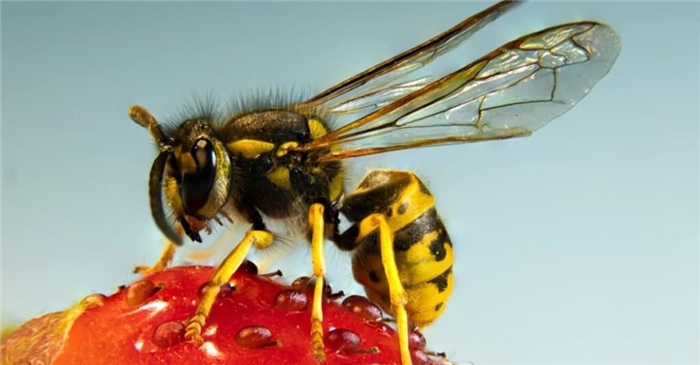
The common wasp (Vespula vulgaris) sitting on a fruit
Frugivores are animals that eat fruits. There are many insects that eat fruit including beetles, aphids, some butterflies, maggots, hornets, wasps, some flies, and others. These insects often feed on very ripe or decaying fruit. Fruit provides insects with an excellent source of carbohydrates and other nutrients.
While some can be beneficial, many of these insects are considered pests when found in gardens and large-scale crops. As a result, the invention and use of insecticides has become widespread. Insecticides have led to an increase in agricultural productivity since the 20 th century; however, they have had severe ramifications as well. Insecticides not only kill the target population, but they can have greater environmental effects due to contamination and runoff. These chemicals are transported by runoff, for example rain or melted snow, and contaminate larger bodies of water which can be harmful to the greater ecosystem and to humans. Insecticides have also had substantial negative effects on pollinator populations and species of birds that rely on insects for food.
What do Carnivorous Insects Eat?
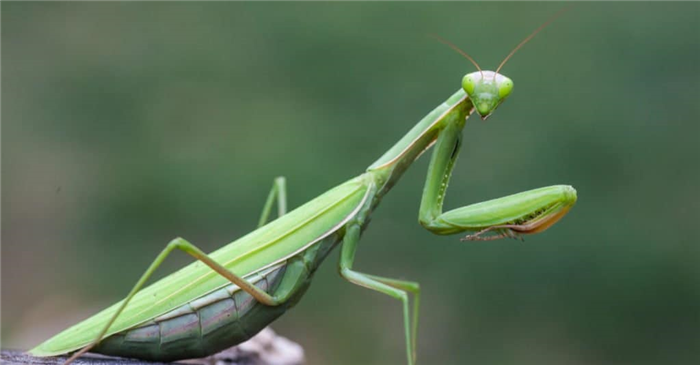
Found worldwide in both temperate and tropical habitats, the praying mantis is known for its large, triangular head, bulbous eyes, and ability to grasp prey with its spiked forelegs.
Carnivorous insects are those that have a diet including meat. Some carnivorous insects eat other insects, some drink blood, and some eat carrion (decaying animal flesh). Praying mantises and dragonflies are the most well-known insects to eat other insects. Dragonflies are almost exclusively carnivorous and typically eat butterflies, smaller dragonflies, midges, moths, and mosquitos. Praying mantises eat smaller mantises, and small vertebrates including frogs, fish, and lizards. Famously, female praying mantises practice sexual cannibalism, which is eating males attempting to mate with them. After the female eats the male’s head, the male is still able to continue copulation. Another carnivorous insect is the Hawaiian caterpillar. These caterpillars use silk traps to capture slugs.
Common insects that feed on carrion are 200 different species of carrion beetles, flesh flies, and blowfly larvae. Flesh flies are a group of flies that deposit larva in decaying flesh or in open animal wounds for sustenance. Carrion beetles are an entire family of beetles called Silphidae. These beetles feed on carrion during all stages of decomposition including fresh, bloated, decay, and dry. Calliphorids, often called blowflies, also feed on decaying animal matter. They have the ability to smell dead matter up to 2 miles away! Many insects also feed on blood including some flies and mosquitos. Many of these blood-sucking insects also rely on plant nectars.
Insects, including blowflies, moths, and beetles, are very useful in forensic science. Forensic entomologists study the presence of different insects and other arthropods on cadavers during criminal investigations. The presence of certain species at different developmental stages provides important information as to where and when a crime was committed.
Other Food Sources
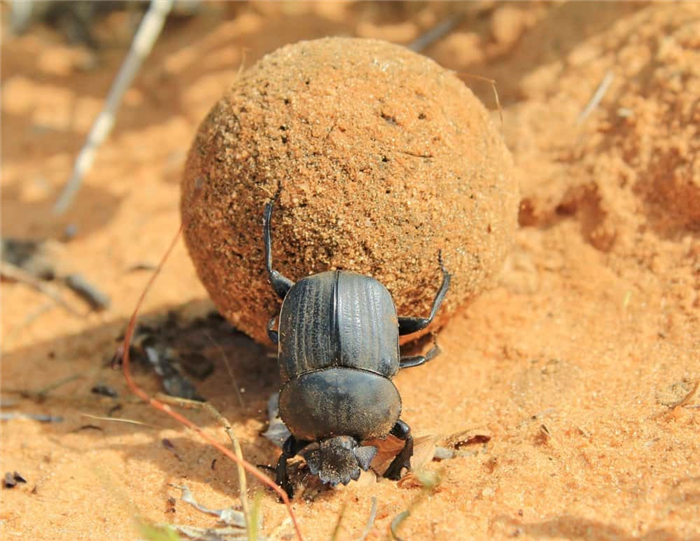
A dung beetle rolling a ball of feces
Stacey Ann Alberts/Shutterstock.com
Dung, animal feces, is a common food source for many insects. Some dung beetles, called rollers, collect fecal matter by rolling it into a large ball. They use this ball of dung for food as well as a breeding chamber. Other dung beetles, called tunnelers, find dung and bury it before returning to eat. Tunnelers can bury up to 250 times their weight in dung in a single day. Several types of flies also feed on animal dung.
Ecological Role
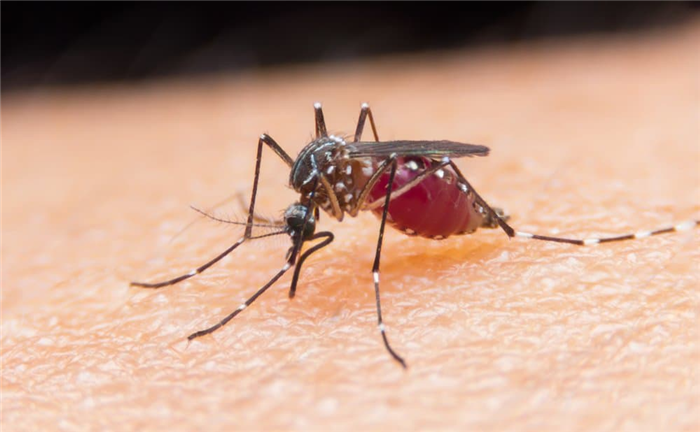
A mosquito feeds on blood and can transfer bloodborne pathogens
Insects serve several purposes that are crucial to the environment’s survival. Pollinators are incredibly important to maintaining plant life which every other living organism relies upon in some capacity. The western honeybee is a keystone species because of its role as a pollinator. This means that if they were to become extinct, their ecosystems would fall out of balance and deteriorate. Other pollinators are butterflies, pollen and nectar feeding beetles, pollen wasps, and humbleflies.
Many insects are also parasitic. Parasites are organisms that inhabit a host organism and harm it in some way. The mosquito is the most lethal animals on the planet because of this. Mosquitoes are vectors for diseases including dengue fever, malaria, and West Nile and zika viruses. With recards to malaria, mosquitoes carry parasitic protists belonging to the genus Plasmodium. These parasites develop inside of mosquitoes and transfer between hosts when the mosquito feeds on an animal’s blood. The parasite lives and reproduces in an animal’s red blood cells and causes the disease malaria. Malaria has killed more humans than any other disease in history and is responsible for at least half a million deaths per year.
Share this post on:
Jesse Elop
Jesse Elop is currently a student at the University of Oregon studying biology and anthropology. He loves studying animals, particularly monkeys and apes. His favorite animals are bonobos, mandrills, and dogs, including his three-year-old pup named Rosie.
What Do Insects Eat? Food List And Fun Facts For Curious Kids
Show all photos 1
Published on Nov 11, 2021
Get inspiration for education!
Subscribe for virtual tools, STEM-inspired play, creative tips and more
Insects are of different forms and sizes and are found all over the world except Antarctica.
The insect world includes more than 10 million species and until today we have discovered less than half of them. The smallest known insects are fairyflies and the largest known insects are titan beetles.
The insect body is divided into three parts namely the head, thorax, and abdomen. A lot of insects also have antennae on their head with which they sense their surroundings. Insects have multiple legs and they don’t have blood in their body. Some insects have six legs while some have eight legs and some also have numerous legs, one such insect is the centipede. Insects are found on land, air, and water.
In this article, we shall discuss what insects eat. Insects eat almost everything from plants to other animals. There are all sorts of insects present from herbivores to carnivores and omnivores. There are insects who eat a lot and again there are insects who don’t eat that much. There are also insects who eat plants at one stage of their lives and then start eating meat at another stage of their lives. Read the whole article to learn more details!
And if you like reading such fun facts then you will also like what do frogs eat, and what do pigs eat.
How do insects eat?
We see lots of common insects like ants, flies, spiders, bees, butterflies, cockroaches, and grasshoppers. But do you know how many insect species are there in the world? According to scientists, there are around 6-10 million species of insects present in the world. Out of which, only around 1 million species have been properly identified. Insect species are of different types who live in different areas and eat different foods.
The insect world is huge and includes different types of bugs. A lot of people get confused between the words ‘insect’ and ‘bug’. Well, bugs are insects only but the word ‘bug’ means a certain type of insect. There are many insects in the world that are found everywhere like ants, bees, and flies. Insects are of different types who follow different diets. Some insects are herbivorous while some are carnivorous and even some are omnivorous as well. Herbivorous insects eat grass, roots, flowers, leaves, stems, nectar, pollen, and seeds. Some common herbivorous insects are bees, aphids, butterflies, caterpillars, and grasshoppers. Carnivore insects simply feed on smaller insects. There are insects like crickets and earwigs who are omnivorous in nature.
What do insects eat in the forest?
Forests are actually home to a wide range of insects. In forests, one can see many insects that are not really seen around humans. A lot of insects like moths, mosquitoes, spiders, different species of ants, and lots of other nameless insects can also be spotted in forests. Forests have a fresh and abundant food supply for insects of all types.
For plant-eating insects, there are lots of fruit, vegetables, leaves, and crops are available. For carnivorous insects like spiders, there are a lot of small insects available that they can trap in their web and prey on. Insects like mosquitoes find lots of animals in forests from whom they can suck the blood out. In short, in forests or wooded areas, there is an endless source of food for all insects and related species. There are many animals or creatures present in forests that make bugs their meal. Animals, mostly birds, eat insects to gain the nutrients that they need. For example, bugs like moths, ants, bees, termites, and larvae are common prey for birds.
What do insects eat in the desert?
Insects have a short lifespan and they spend most of their time either eating or reproducing. Insects survive only some weeks or sometimes a month but they cannot survive more than that. The insect world is very diverse as there are insects of different forms and sizes. From the smallest of ants to the biggest of beetles, one can see lots of insects species every day.
There are lots of insects found in sandy desert areas also. The desert environment is a bit different than forests as there are not many trees or shade available. The weather condition is also harsh in deserts and for that reason, not all insects can survive there, but those who can have designed their own diet. There are lots of insects found in deserts also. Some are like beetles, tarantulas, desert locusts, skimmers, and many more. In deserts, there are fewer crops but still, insects manage, and other than that, many adult insects in deserts are carnivorous and eat flesh and eggs of other insects. For living in the desert, a lot of adaptations in their bodies have also been made over time. Because the desert environment is dry, in order to live there, their bodies develop tough cuticles to stop transpiration. Transpiration is the process through which animals or plants lose water from the body through the skin. The presence of tough cuticles could stop this unnecessary loss of water and also make their body tough. The cuticle or the exoskeleton also provides durability to insects living in deserts.
What do insects eat in the rainforest?
There are lots of insects or bugs present in this world who feed on different kinds of food. Some bugs feed on nectar, some feed on plants, some are predators who feed on other insects while some feed on the blood of humans. Rainforests give shelter to some exotic species of insects that stay away from humans and are only found there.
Insects that live in rainforests are wild and dangerous in nature and a lot of those adult insects bear venom also. Wild species of ants, big and poisonous spiders, termites, beetles, and lots of other insects are commonly seen in rainforests. Again in rainforests, there is no scarcity of food. From insect groups that keep eating plants to insects that prey on other insects, all have abundant food available.
Insects are both beneficial and destructive in nature. In our daily life, we see multiple insects that are good for the environment, like bees and butterflies who help in pollination. Bees create honey that is also beneficial for us. On the other hand, there are bad insects also who cause nothing but destruction, and they are known as pests. Termites destroy furniture that is made of wood. Some insects spread diseases too. Mosquitoes are experts in sucking blood from our bodies, and while sucking blood, they may also infect us with diseases like malaria and dengue fever. Houseflies contaminate our food which causes diarrhea and dysentery. Just like that, there are more pests available that are meant to be controlled. By keeping your house and its nearby area clean, you can surely control their growth.
Here at Kidadl, we have carefully created lots of interesting family-friendly facts for everyone to enjoy! If you liked our suggestions for what do insects eat, then why not take a look at what do lizards eat, or house centipede facts.
Written By
The Kidadl Team is made up of people from different walks of life, from different families and backgrounds, each with unique experiences and nuggets of wisdom to share with you. From lino cutting to surfing to children’s mental health, their hobbies and interests range far and wide. They are passionate about turning your everyday moments into memories and bringing you inspiring ideas to have fun with your family.
Read The Disclaimer
Disclaimer
At Kidadl we pride ourselves on offering families original ideas to make the most of time spent together at home or out and about, wherever you are in the world. We strive to recommend the very best things that are suggested by our community and are things we would do ourselves – our aim is to be the trusted friend to parents.
We try our very best, but cannot guarantee perfection. We will always aim to give you accurate information at the date of publication – however, information does change, so it’s important you do your own research, double-check and make the decision that is right for your family.
Kidadl provides inspiration to entertain and educate your children. We recognise that not all activities and ideas are appropriate and suitable for all children and families or in all circumstances. Our recommended activities are based on age but these are a guide. We recommend that these ideas are used as inspiration, that ideas are undertaken with appropriate adult supervision, and that each adult uses their own discretion and knowledge of their children to consider the safety and suitability.
Kidadl cannot accept liability for the execution of these ideas, and parental supervision is advised at all times, as safety is paramount. Anyone using the information provided by Kidadl does so at their own risk and we can not accept liability if things go wrong.
Sponsorship & Advertising Policy
Kidadl is independent and to make our service free to you the reader we are supported by advertising.
We hope you love our recommendations for products and services! What we suggest is selected independently by the Kidadl team. If you purchase using the buy now button we may earn a small commission. This does not influence our choices. Please note: prices are correct and items are available at the time the article was published.
Kidadl has a number of affiliate partners that we work with including Amazon. Please note that Kidadl is a participant in the Amazon Services LLC Associates Program, an affiliate advertising program designed to provide a means for sites to earn advertising fees by advertising and linking to amazon.
We also link to other websites, but are not responsible for their content.
What Do Pests and Insects Dine On?
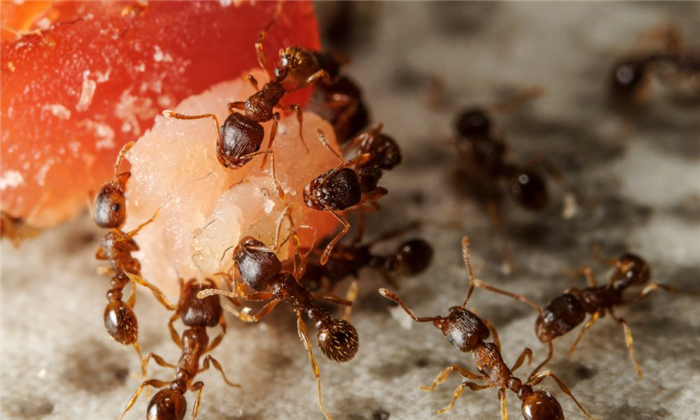
Humans co-exist with the pest and insect world. Ever wonder that they eat? Is it the same types of foods humans enjoy or survive on? Insects and pests eat a large range of foods. About half are plant-eaters, feeding on leaves, seeds, roots, wood, or nectar. Some are predators, hunting other small creatures. Some are parasites that eat the flesh or blood of humans and animals. Some love human foods. You’ve seen ants, flies and roaches in your kitchen looking for left overs.
Check out what specific foods make up a pest and insect diet:
Ants in general have a very diverse diet depending on what species of ant they are and what season is occurring. Springtime ants will eat dead animals and insects for protein. They also often seek out honeydew, a substance made by aphids when they feed on plants. Indoors. Ants like crumbs, spills, open food containers, and even uncovered trash cans. They love sweets, eggs, meats, cakes, oils, and fats. That is why you see them in your kitchen.
BEES/HORNETS/WASPS
Bees and hornets eat nectar and pollen. They also eat other sweet, sugary liquids like juice, soda, or fallen fruit. Wasps prey on other insects like spiders, ants, bees, caterpillars and flies. Carpenter Bees do not eat wood They just bore into wood to lay their eggs. They eat pollen.
Beetles are herbivores and eat the roots, leaves, stems, seeds, nectar, fruits and wood of a variety of plants. There are some beetle species that are predators and eat things like snails, worms, maggots, grubs, and other beetles.
BROWN RECLUSE SPIDERS
Their diet consists of bugs, like crickets and cockroaches, firebrats and crawling bugs.
BLACK WIDOWS SPIDERS
Black Widow spiders eat small insects such as mosquitoes, grasshoppers, and beetles. Sometimes they eat mice, lizards, and snakes caught in the web. In hot dry places Black Widows live on a diet of scorpions. By the way, it is only a myth that they eat their mates!
They eat humans and animals for a blood meal.
COCKROACHES
Cockroaches are not picky. They definitely love most things inside human households like sweets, cheeses, meats, grease, starches, vegetables and fruits. They even go further with these items too – leather, beer, glue, dried skin, books, paper and human dander. The list is endless.
A crickets’ diet is very similar to a human’s diet. They are omnivores that eat fruits, meats and vegetables. Outside they eat rotting leaves, rotting fruit, vegetables and insects. They also like fabrics.
Fleas are parasites that eat the flesh or blood of larger animals without killing them such as cats and dogs. They love nibbling on humans too.
Flies eat organic decaying matter. This is why you see flies around garbage. This includes fruit, vegetables, animals, meat, plant secretions, and even human feces. Fruit Flies like sucking the nectar from flowers as well. House flies can turn solids into liquids and then eat the liquid form of that food.
HOUSE CENTIPEDES
They love flies, spiders, and plant tissue
Most species of moths don’t actually eat much when they’re adults. They drink their food. They have a long, narrow tubes in their mouth that are used like straws to drink nectar, tree sap, and juice from decaying fruit. As larvae, moths eat on natural fibers of fabrics, fur, hair, and paper dust.
PRAYING MANTISES
Praying mantises are predators, hunting other small creatures.
This is a BIG category. Rodents can include mice, rats, hamsters, guinea pigs, beavers, muskrats, porcupines, woodchucks, chipmunks, squirrels, prairie dogs, marmots, chinchillas, voles, etc. Most rodents like grains, fruits, seeds, chocolate, and random items in your trashcan.
Silverfish feed on carbohydrates, particularly sugars and starches. They also eat cellulose, shampoos, glue in books, paper, clothing, flour, oats, linen, silk and dead insects.
A spider’s diet consists of insects and other spiders (some larger spider species even prey on things like lizards, frogs, fish, or baby rodents). Spiders will only feed on live spiders or ones they’ve recently killed.
Young stink bugs are plant feeders like weeds and grasses. Mature stink bugs are drawn to orchards, fields, and residential landscapes like apple trees, peach trees, cotton crops, berries, peppers, pecans, beans, and ornamental plants.
Wood makes up the majority of termite’s diet. They also eat other materials such as plastic, paper and drywall. Termites are detritivores and feed on dead plants and trees. Termites get nutrients from cellulose, an organic fiber found in wood and plant matter.
As you can see, pests and insects enjoy some of our human food and that makes sense why they come into our homes and dine away. If you see any evidence, contact a pest control company immediately to take care of the issue.
Houseman Services is the only complete service company in the Athens, GA area. We provide Weed control, fertilization, shrub care, mulch & pine straw, sod, annual plantings, irrigation, and commercial & residential lawn maintenance. We are also state certified and licensed in wood destroying organisms (termite control), household pest control, public heath, and turf & ornamental weed control. We are licensed to control and treat mosquitoes, termites, all pest problems and turf & ornamental weed control. Contact the professionals at Houseman Services and set up a free inspection of your yard. We have been servicing homes and businesses in the Athens, Clarke County area since 1985!
